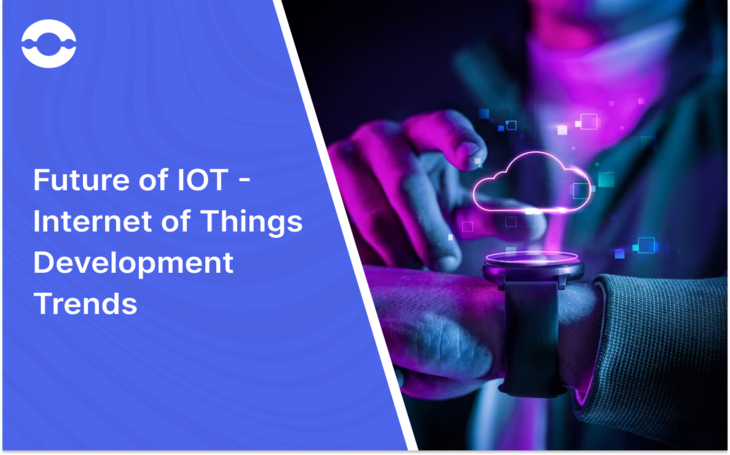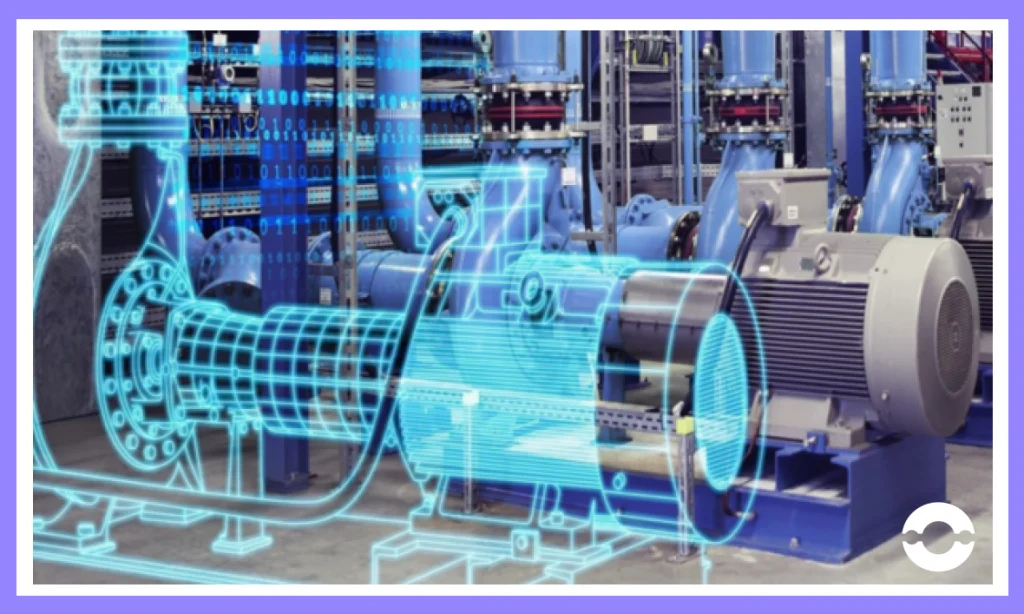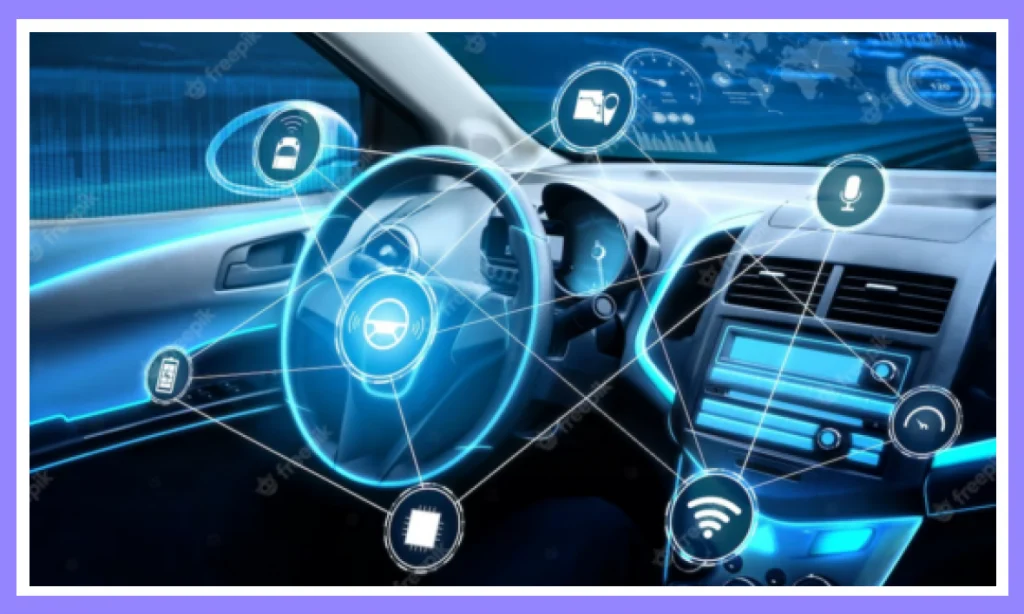
The Internet of Things or IoT is a technology that is gradually penetrating different aspects of human life. Multiple industries are leveraging this technology to streamline their operations and thus, bring more proficiency.
Thus, the future of IoT certainly looks bright and diversified.
What Does The Future Hold For IoT Technology?
The technology of IoT was introduced over a decade ago. Different businesses started to adopt it. It was primarily used for connecting devices to the internet. It had restricted use cases back then and security threats loomed over its usage.
However, as time and technology progressed, so did IoT solutions. They became more sophisticated and secure. Contemporary IoT technology is capable of facilitating and running a complex network of interconnected devices and systems, bringing a significant change in the way businesses and humans in general, operate.
So, if someone asks us, ‘What is the future of IoT?’, we will say that the technology has come a long way since its inception and the next few years would witness more and more applications of it. The technology has found its way into multiple industries and would grow extensively with every innovation.
In fact, the global number of IoT devices is expected to reach 30 billion by 2030, a steep jump from a mere 9.7 billion in 2020. Further, the IoT market volume is projected to reach $33.74bn by 2027, with an impressive CAGR of 11.49 between 2022- 2027.
Governments are implementing new legislation surrounding the security of IoT devices.
The scope of the Internet of Things (IoT) would expand as more and more sectors use it to connect people and objects around them whilst ensuring security.
In next and the final part of this blog, we would look at the future trends of IoT.
Top 10 IoT Trends For 2023
Smart objects have existed in the world for a long now. However, IoT technology brings better connectivity and data exchange in real-time for the available smart devices. IoT in short enhances the user experience and utility of such devices.
IoT makes smart devices smarter and is further helping many businesses across various industries to connect devices or machinery, depending upon the operational requirements, for enhanced coordination and efficiency.
Let’s look at the future trends of IoT in different domains/areas:
1. AI and IoT
Both AI (Artificial Intelligence) and IoT technologies, independently used, are helping businesses to polish their goods and services. Interestingly, these two are capable of creating synergies, when used together.
As IoT technology use increases in business operations, it is offering more detailed information or data to businesses regarding their productivity, performance, quality of goods and services, etc. This information then can be used to create and train AI models.
Through automation and incorporating AI, powered by IoT-gathered data, into their systems, businesses can further bring sophistication to their operations, and goods and service quality and performance. With advanced IoT solutions, AI could be placed closer to sensors or actuators, simplifying connectivity requirements, and allowing the IoT technology to take faster decisions.
In fact, New Delhi, the capital of India, plans to combine CCTV with AI and IoT in its traffic management systems. Users would further get to witness some more AI and IoT trends emerging in the near future, such as visual inspections, better traffic management across more countries and cities, and advanced wearable technology.
The future of a combination of both these technologies would pave the way for innovations and more utility-generating goods and services.
2. Digital Twins

This technology called Digital twins is one of the most exciting future IoT trends of 2023. It is a virtual representation of a real-world physical product, entity, or process. Its three elements are: a physical system/entity in real space; the digital twin in software form; and the data that links the two elements together.
This technology is used by multiple industries such as engineering, real estate, production, manufacturing, healthcare, etc. This technology serves various purposes such as diagnosis, optimization, monitoring, and controlling asset utilization and performance.
Research suggests that Digital Twins technology has a 58% annual expansion rate between 2021 and 2026.
3. 5G-Connected Automotive Services

There are ample modern-day applications of IoT devices powered by 5G. The advanced network connection enhances the efficiency of IoT technology.
With the application of a 5G network which processes huge amounts of data in real-time, and has low latency, various operators are attempting to launch connected car services. With these services, the operators aim at enhancing vehicle-to-vehicle communication, making ADAS systems more situationally aware, and lower crash incidents.
AT and T plans to work with BMW and Polaris in the future to offer connected vehicle technology to big automobile names.
4. IoT in Healthcare
IoT technology is highly beneficial in the domain of healthcare and the future would more life-saving innovations. Connected medical instruments and equipment, voice assistants, and smart wearables have brought monumental changes in the healthcare industry.
Doctors and patients stay connected with these devices while the latter is in transit in an ambulance. Furthermore, smart at-home sensors will be used to monitor patients’ vital signs and overall health. IoT will enable remote monitoring in the future as well. Medical decisions would be more informed and effective with access to real-time patient data.
5. Sensor Technology
IoT addition to sensor technology has enhanced the impact and increased the applications of the latter. Industries that make use of the technology enjoy higher connectivity and greater analytics to process than in earlier times.
Sensor technology is expected to advance in the near future, as per Gartner reports. Bosch is expected to showcase new sensor systems designed for autonomous vehicles and many other sensor systems/ solutions for different businesses.
6. Chip-level Innovation For IoT Devices
The future might see additional specialized chips for IoT systems that leverage their unique applications. Incorporating edge computing and AI in IoT systems has led to some of these major enhancements.
Additional demands for processing power at the edge have made the industry develop new architectures and instruction sets. Therefore, it is expected that customized chips, capable of managing neural networks and AI systems at minimal power, will be introduced in 2023.
7. IoT Security

As the market for IoT is maturing, more legislation is being passed around the technology. Governments have become more stringent with security measures. The U.S. implemented California’s SB-327 or “The Default Password” law, U.K Government has its Product Security and Telecommunications Infrastructure Bill (PSTI), etc.
In the future, network engineers would be expected to incorporate rules such as strictly following the encryption feature, obtaining certificate-based authentication, and following more IoT standardization practices, into their management of IoT devices. This would ensure that the data is safe and secure in the devices.
8. Fresh UI And User Experiences
As IoT becomes a common term in the consumer marketplace, OEMs (Original Equipment Manufacturers) are coming up with new interfaces. The UI for smart devices is much more carefully designed and developed to enhance user experience and offer ease of usage and navigation.
Furthermore, the usage of digital and voice assistants is also increasing, giving users high hopes for smart device UIs in 2023 and the distant future.
9. IoT And Smart Industry
Research articles as well as papers and newspapers are brimming with mentions of smart cities, smart industry, smart agriculture, etc. All these projects are powered by multiple advanced technologies.
IoT in smart industries could help with predictive maintenance through sensors that would give management updates on heavy and expensive equipment to the plant managers.
Furthermore, by offering better productivity and optimization visibility to the plant managers, IoT would make equipment utilization more efficient and improve supply chain management.
10. New Technologies For Connectivity
There has been an increase in the past 1 year in the sale of Narrowband IoT (NB-IoT) services. This would continue to grow this year as well. Additionally, OEMs will also continue to explore and experiment with new connectivity technologies for some particular use cases. This might result in the creation of new IoT products supported by 5G and satellite internet connectivity.
The future of IOT thus seems exciting and filled with groundbreaking products that would benefit users and producers, alike. In fact, it is expected that around 152,200 IoT devices will be connecting to the internet every minute in 2025. It is a staggering figure!
Build IoT Devices For Your Business With BigOhTech
BigOh is a leading name in the IT and tech industry. We specialize in emerging technologies and offer IoT app development services that assist a business with achieving their goals and offering users emerging and advanced technological solutions.
Our IoT app development services include IoT consultation, IoT wearable connectivity, app development, IoT app testing and maintenance, etc.
Visit our website and get closer to your IoT device today!




